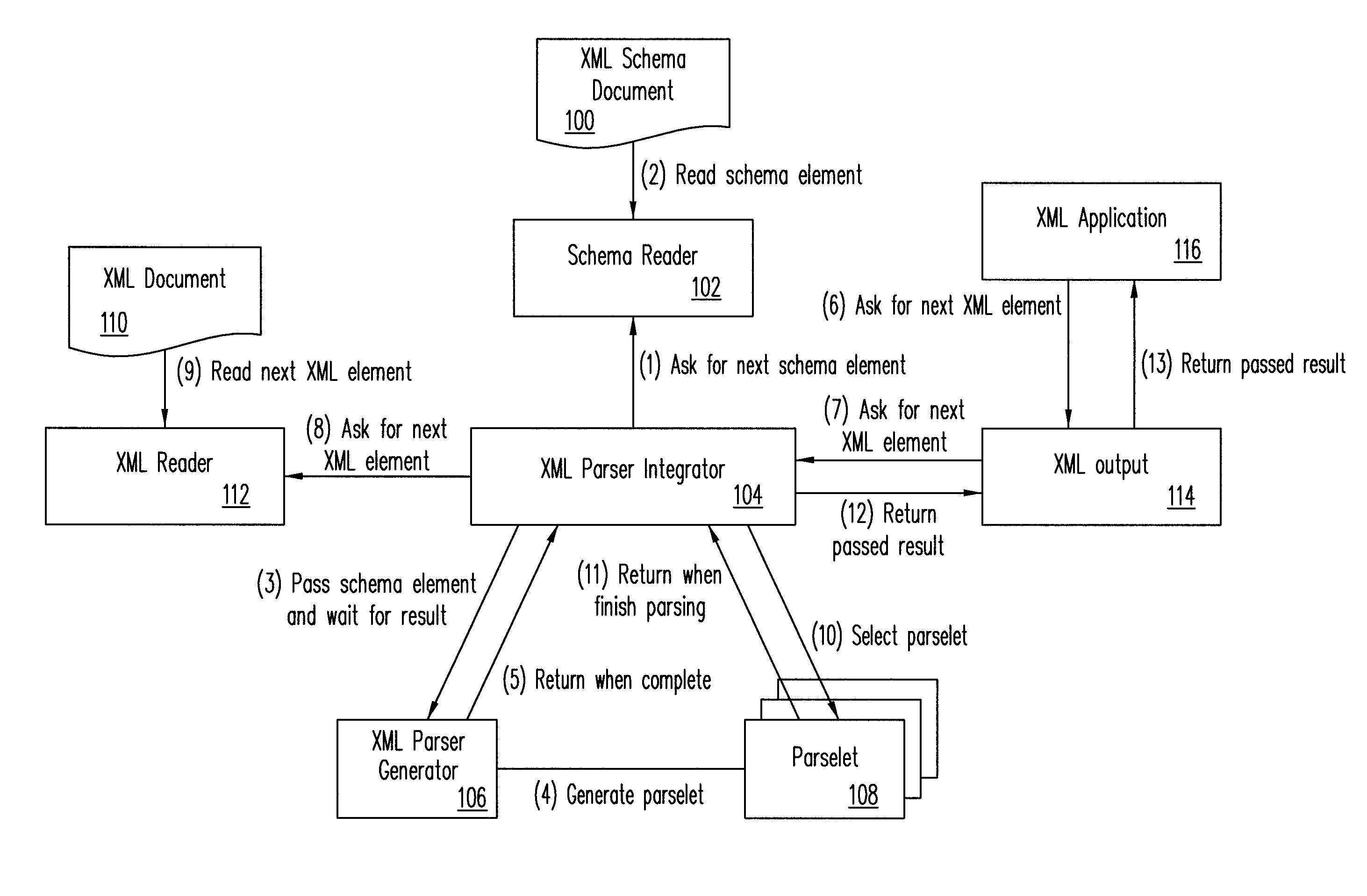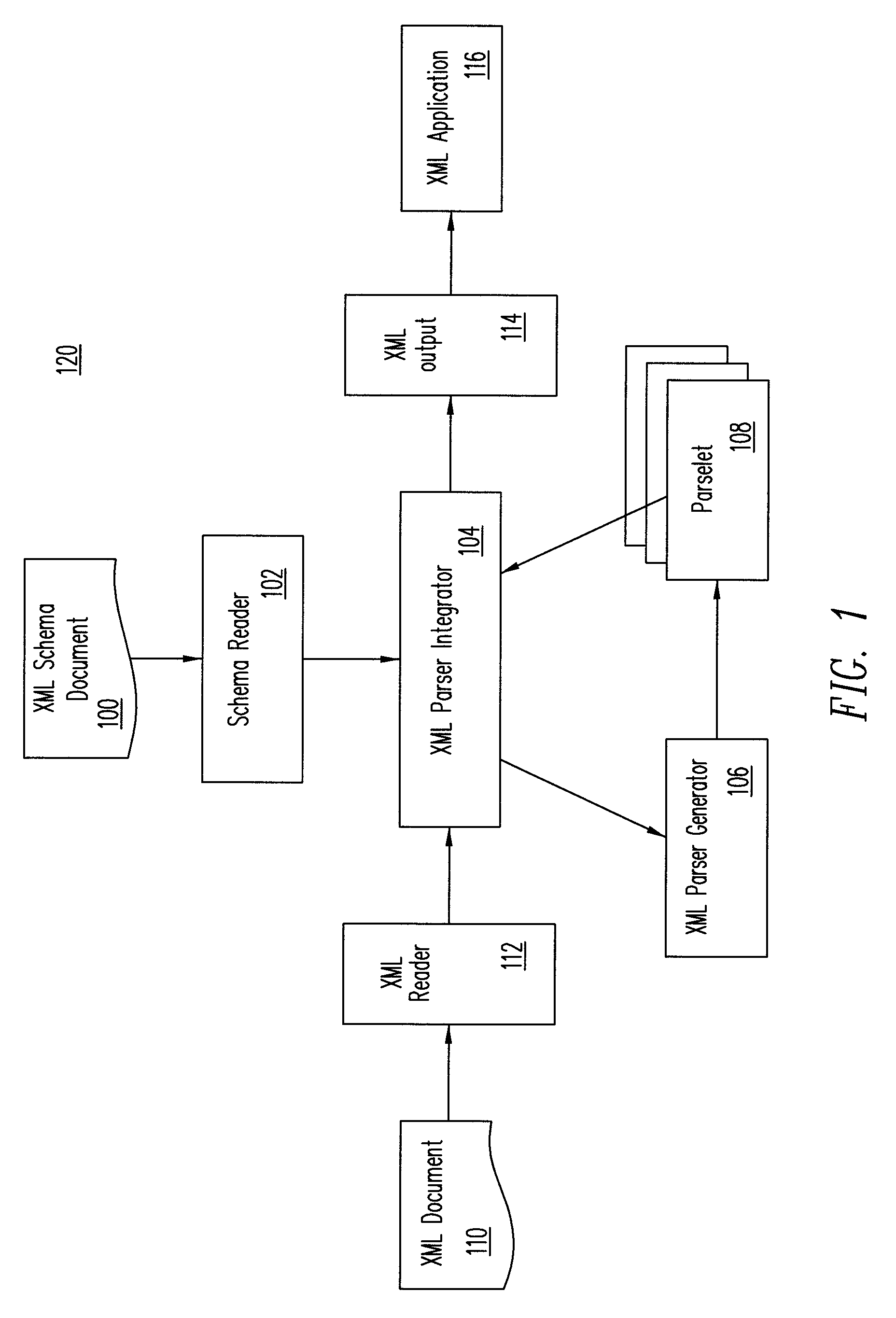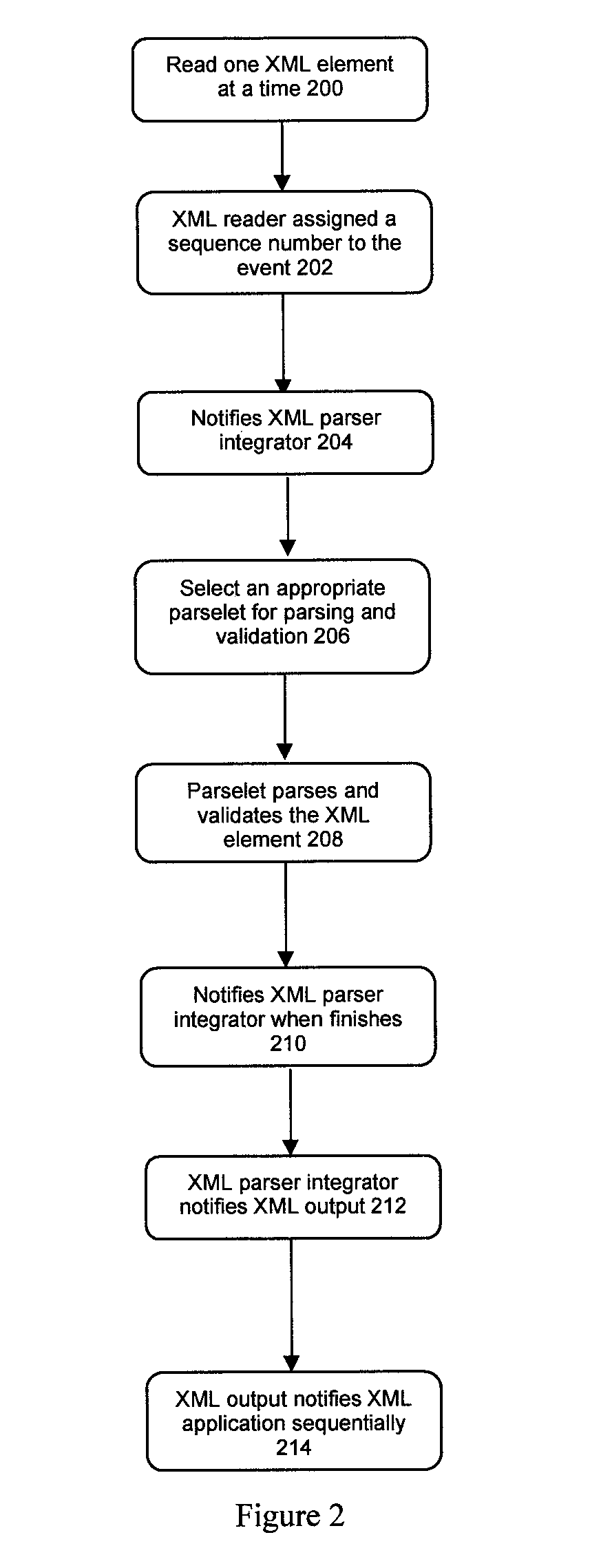Method and apparatus for schema-driven XML parsing optimization
a schema-driven xml and optimization technology, applied in memory systems, program control, instruments, etc., can solve the problems of increasing processing overhead, time-consuming and laborious, and reducing the memory requirement of parsers, so as to reduce the memory requirement and reduce the memory requirement. , the effect of significantly reducing string-matching operations
- Summary
- Abstract
- Description
- Claims
- Application Information
AI Technical Summary
Benefits of technology
Problems solved by technology
Method used
Image
Examples
Embodiment Construction
[0026]The present invention provides a validating parser that validates an XML document as it is parsed, thereby reducing the validating and parsing time requirements and the memory bandwidth requirement. The present invention may be applied to implement a parser code generator and a reconfigurable parser.
[0027]According to one embodiment of the present invention, based on a specific XML schema, a validating parser generator dynamically generates an executable parser code (“parselet”) for implementing parsing of a specific XML element in the XML schema. FIG. 1 is a block diagram of schema-driven parser generator system 120, according to one embodiment of the present invention. As shown in FIG. 1, schema-driven validating parser system 120 includes:[0028](1) schema reader 102, which reads one or more XML schema documents (e.g., XML document 100);[0029](2) XML reader 112, which reads XML documents (e.g., XML document 110);[0030](3) XML parser integrator 104, which coordinates among th...
PUM
 Login to View More
Login to View More Abstract
Description
Claims
Application Information
 Login to View More
Login to View More - R&D
- Intellectual Property
- Life Sciences
- Materials
- Tech Scout
- Unparalleled Data Quality
- Higher Quality Content
- 60% Fewer Hallucinations
Browse by: Latest US Patents, China's latest patents, Technical Efficacy Thesaurus, Application Domain, Technology Topic, Popular Technical Reports.
© 2025 PatSnap. All rights reserved.Legal|Privacy policy|Modern Slavery Act Transparency Statement|Sitemap|About US| Contact US: help@patsnap.com



